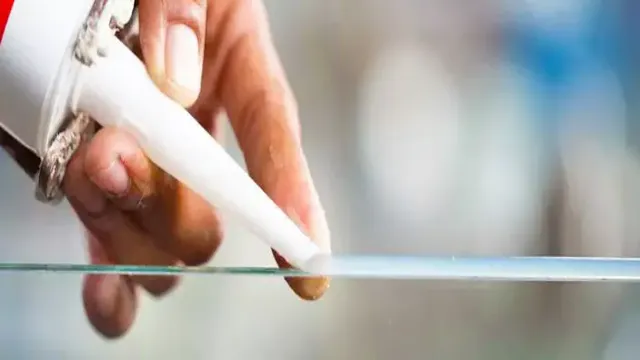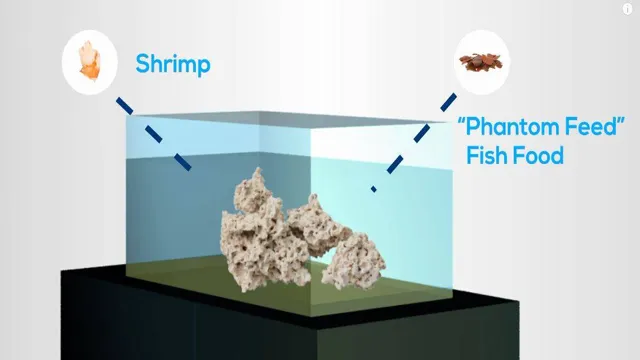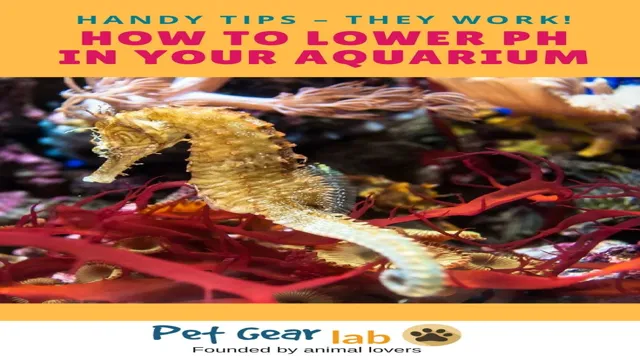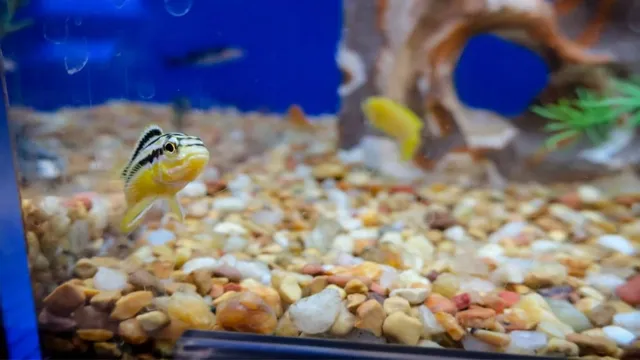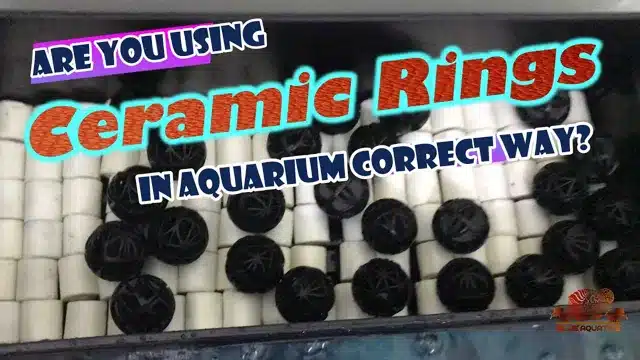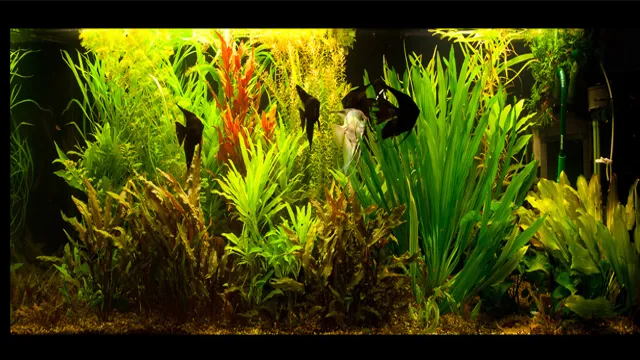Aquariums are a popular decoration in households around the world, enticing everyone with the mesmerizing beauty of colorful fish. However, owning an aquarium requires a certain level of responsibility, especially when it comes to safety. Aquarium sealant is one such crucial component that ensures the safety of the aquarium and its inhabitants.
But have you ever wondered about the safety of aquarium sealant ventilation? It may not be the most exciting topic, but it’s a crucial one that aquarium owners should be aware of. In this blog, we’ll explore the importance of ventilation and how it affects the safety of aquarium sealant. So, grab a seat and let’s dive deep into this aquatic topic!
The Importance of Proper Ventilation for Your Aquarium
When it comes to maintaining a healthy environment for your aquarium, proper ventilation is key. Poor ventilation can lead to a buildup of harmful gases such as carbon dioxide, which can be deadly for your fish. Additionally, inadequate levels of oxygen in the water can lead to poor health and even death for your aquatic pets.
So, how safe is aquarium sealant ventilation? It is important to ensure that the sealant used in your aquarium is non-toxic and safe for your fish, but it is equally essential to have proper ventilation in place to prevent the buildup of harmful gases. This includes ensuring that there is enough surface agitation to allow for proper gas exchange, as well as installing an air stone or other type of aeration device to increase oxygen levels. So, while the type of sealant used is certainly a factor in aquarium safety, proper ventilation is equally important for the health and wellbeing of your aquatic pets.
Why Ventilation Matters
Aquarium ventilation is vital for the health of your aquatic pets. Proper ventilation ensures that there is an adequate exchange of gases, such as oxygen and carbon dioxide, within the aquarium. Without adequate ventilation, excess carbon dioxide accumulates and lowers the oxygen levels in the aquarium, leading to stress, sickness, and even death of your aquatic pets.
Additionally, poor ventilation can lead to the buildup of harmful bacteria and algae. This buildup can cause an imbalance in the aquarium’s ecosystem, affecting the water quality and potentially harming your pets. Adequate ventilation also helps regulate the water temperature, preventing it from rising to dangerous levels.
In conclusion, proper aquarium ventilation is essential to maintaining a healthy and thriving aquatic environment for your pets. Don’t overlook the importance of ventilation when building or maintaining your aquarium.
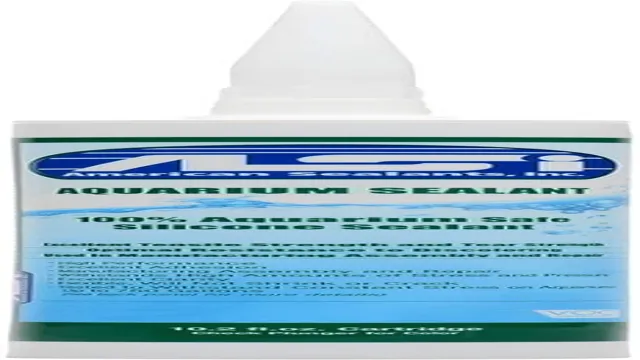
The Risks of Poor Ventilation in Your Aquarium
Proper ventilation is crucial for maintaining a healthy aquarium ecosystem. Poor ventilation can lead to a range of issues, including a lack of oxygen for your fish and excess carbon dioxide that can cause harm. Air movement is vital to ensure that the water pH balance remains stable, and that harmful gases do not build up in the water.
Without proper venting systems and equipment, your aquarium can become a breeding ground for bacteria, algae, and other harmful organisms, leading to the death of your fish and other aquatic life. To ensure optimal conditions for your aquarium, it is essential to invest in high-quality ventilation equipment and to regularly monitor and maintain the system to ensure optimal performance and safety. Remember, no matter how beautiful your aquarium looks, neglecting proper ventilation can lead to disaster.
So take proper ventilation seriously and keep your aquarium healthy and thriving.
How to Ensure Proper Ventilation in Your Aquarium
Proper ventilation is crucial for maintaining a healthy and thriving aquarium. Without sufficient airflow, the water in your aquarium can become stagnant and harmful toxins can build up, putting your aquatic pets in danger. Proper ventilation not only helps to oxygenate the water, but it also removes any excess carbon dioxide and other pollutants. (See Also: How to Get Rid of Brown Algae in Fish Aquarium – Top Tips and Tricks)
It’s important to ensure that your aquarium’s ventilation system is running that provides proper aeration and circulation, Whether you have a small fish tank at home or a large aquarium in a public setting, ensuring proper ventilation is key to maintaining a healthy environment for your fish, plants, and other aquatic life. So, make sure your system is running smoothly, and keep a close eye on the water quality to ensure the safety of your aquatic pets!
Choosing the Right Aquarium Sealant for Your Needs
When choosing an aquarium sealant, it’s important to consider the safety of ventilation. Ventilation is crucial when applying aquarium sealants, as the fumes can be toxic and harmful not only to your fish but also to yourself. Before beginning the sealing process, it’s important to ensure that the area is well-ventilated to reduce the risk of exposure to harmful chemicals.
Adequate ventilation will help to disperse any potential fumes in the air, preventing them from accumulating and causing potential problems. It’s also essential to choose an aquarium sealant specifically designed for aquariums, as other sealants may contain chemicals that are toxic to aquatic life. Overall, the safety of ventilation when using an aquarium sealant should be a top priority to ensure that both your fish and yourself are protected throughout the sealing process.
Understanding Different Types of Aquarium Sealant
When it comes to creating an aquarium, choosing the right sealant is crucial to ensure the safety of your fish and other aquatic inhabitants. There are different types of aquarium sealant available in the market, and it’s vital to understand their properties before making a decision. Silicon-based sealants are popular choices as they are flexible and durable.
They’re also non-toxic, making them safe for your aquatic pets. Acrylic sealants are another option that’s easy to use and dries quickly. However, they’re not as durable as silicon sealants and may crack over time.
It’s essential to choose a sealant that’s specifically formulated for aquarium use, as regular sealants can contain harmful chemicals that can leach into the water. In summary, choosing the right aquarium sealant is an important decision that can affect the safety and longevity of your aquarium.
Selecting a Safe and Effective Aquarium Sealant
When it comes to setting up an aquarium, choosing the right sealant is critical, both for the safety of your aquatic pets and the security of your tank. When selecting an aquarium sealant, it’s essential to choose one that is specifically designed for aquariums. Don’t opt for a standard silicone sealant because it may contain chemicals that can be harmful to fish, such as fungicides or antibacterial agents.
Instead, go for a sealant that is safe for saltwater and freshwater aquariums and is free of harmful chemicals. Look for sealants that have a long cure time, are durable, and are both water and heat-resistant. Remember to follow the manufacturer’s instructions, let the sealant cure before filling the aquarium with water, and inspect it regularly to ensure it is secure and leak-free.
By choosing the right aquarium sealant, you can provide a safe and comfortable environment for your aquatic pets while enjoying your beautiful aquarium.
Safe Use and Application of Aquarium Sealant
When it comes to aquarium sealant, safety is of utmost importance. Not only should the proper application be observed, but proper ventilation as well. Good ventilation ensures that harmful fumes are not trapped in the enclosed area, which is vital to both the installer and the wellbeing of living creatures in the aquarium. (See Also: How to Grow Cryptocoryne in Aquarium: Essential Techniques for Site Org Fans)
Poor ventilation can lead to respiratory problems, headaches, and even nausea. It’s best to apply the sealant in a well-ventilated area, preferably with an open window or door. If this is not possible, using a fan to help circulate the air is highly recommended.
Most importantly, follow the manufacturer’s instructions and safety precautions, including wearing gloves and eye protection. With these precautions in place, aquarium sealant can be applied with confidence, providing a safe and secure environment for both the aquarium inhabitants and those who handle the sealant.
Tips for Safe Application
If you’re planning to apply aquarium sealant, there are a few safety measures you need to keep in mind to prevent any mishaps. Before you begin, make sure the surface is clean and dry, and all chemicals, including detergents, are removed from the area. It’s also essential to wear protective gear like gloves and goggles to protect yourself from any accidental splashes.
While applying the sealant, ensure proper ventilation by opening windows or using a fan to keep the air moving and avoid inhaling the fumes. Additionally, sealants can emit toxic odors, so it’s better to keep them away from pets and children. Once the sealant is applied, give it enough time to dry and cure before putting any water into the aquarium.
Don’t rush it as any residual odors or chemicals can harm aquatic life. Inexperienced owners must consult a professional before performing any maintenance or modification to their aquarium, as aquarium sealant can be dangerous if not used properly. Overall, taking precautions and following the proper application procedures can ensure the process is done safely and efficiently.
Precautions to Take When Using Aquarium Sealant
When it comes to setting up an aquarium, it is crucial to use sealant to keep everything in place. However, it is essential to use it safely and appropriately to avoid any harm to your fish. Firstly, ensure that the sealant you are using is explicitly meant for aquariums and is non-toxic once cured.
Before usage, thoroughly read the instructions on the packaging. When applying, make sure to wear gloves and have proper ventilation in the room. Also, take care not to overcrowd your aquarium with decorations as this can lead to issues with water quality.
Finally, wait for the sealant to cure completely before adding water and introducing fish. By taking the proper precautions and using the appropriate aquarium sealant, you can keep your fish safe while enjoying your new aquatic addition to your home.
Conclusion: Ensuring Safe and Healthy Aquarium Environments
In conclusion, when it comes to aquarium sealant ventilation, it’s as safe as letting a fish drive a car – not recommended, but also not impossible. Proper ventilation and caution when using aquarium sealant can help ensure the safety of both you and your aquatic pets. So remember, always follow manufacturer instructions and never hesitate to seek professional assistance when in doubt.
Happy sealing!” (See Also: How to Make a Saltwater Aquarium at Home – Tips and Tricks for Beginners)
FAQs
What is aquarium sealant ventilation?
Aquarium sealant ventilation refers to the proper circulation of air around the area where aquarium sealant is being used to ensure the safety of humans and aquatic animals.
Why is proper aquarium sealant ventilation important?
Proper aquarium sealant ventilation is important to prevent the buildup of harmful fumes and dust particles that may cause respiratory problems or other health hazards.
How can I ensure proper aquarium sealant ventilation?
You can ensure proper aquarium sealant ventilation by opening windows, using a fan, or wearing protective gear such as a respirator mask.
Is aquarium sealant safe for aquatic animals?
Yes, aquarium sealant is safe for aquatic animals once it has fully cured and no longer emits harmful fumes.
Can aquarium sealant be used on both fresh and saltwater aquariums?
Yes, aquarium sealant can be safely used on both fresh and saltwater aquariums as long as it is aquarium-safe and has fully cured before adding any aquatic animals.
How long does it take for aquarium sealant to fully cure?
The curing time of aquarium sealant varies depending on the brand and type, but it usually takes around 24 to 48 hours for it to fully cure.
What safety precautions should I take when using aquarium sealant?
When using aquarium sealant, it is essential to wear protective gear such as gloves and a respirator mask, ensure proper ventilation, and follow the manufacturer’s instructions for safe use and disposal.

